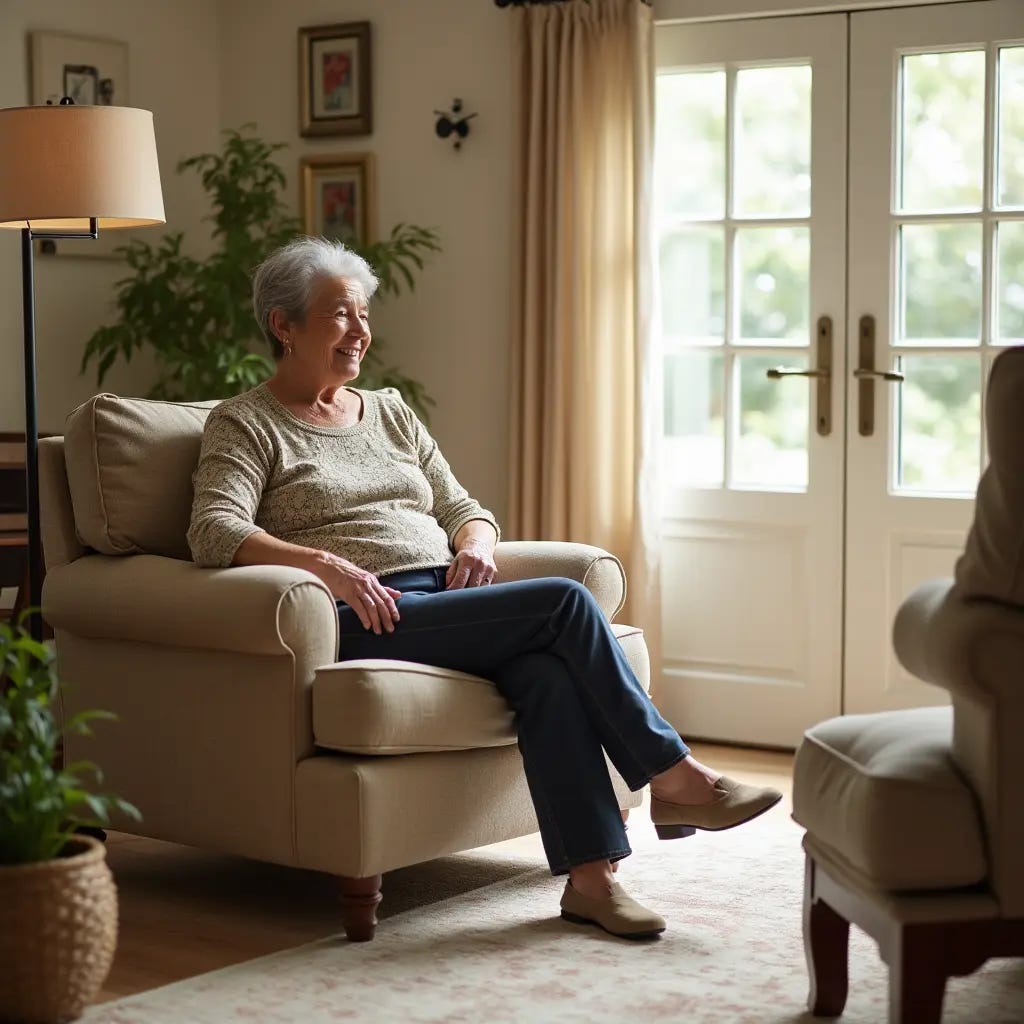When Margaret tripped over her ottoman last spring, she didn’t think much of it. A stubbed toe, a startled yelp, and a quick sit-down with an ice pack.
But later that week, she found herself eyeing the layout of her living room with fresh suspicion.
That cozy reading nook by the window suddenly seemed… cluttered.
If you’ve ever felt like your furniture was working against you, you’re not alone.
Whether it’s a too-tight hallway, a dining chair that swivels too fast, or a coffee table that magically moves every time you walk by the way we arrange our homes can seriously affect how safely and comfortably we move through them.
Here’s how to make your space a mobility-friendly haven without sacrificing the charm and comfort that make it home.
Start with the “Everyday Pathways”
Think about the paths you walk every day. From the bedroom to the bathroom. The kitchen to the living room. The front door to the mailbox.
These paths should be wide, clear, and easy to navigate even in the dark or half-asleep.
Try this:
Walk your usual routes at home and notice where you naturally pause, turn, or feel cramped. You want at least 36 inches of space in major walkways. If you’re squeezing past furniture or shimmying sideways, something needs to shift.
Pro tip: Use painter’s tape to map out clear “walking zones” on the floor. It’s a simple trick that helps you visualize what needs to move.
Rethink (or Retire) Tricky Furniture
That coffee table with sharp corners? The too-low recliner that’s hard to get out of? Some pieces might need an upgrade.
Look for furniture that:
Has rounded edges (fewer bruises!)
Doesn’t wobble
Sits at a height that’s easy to stand up from (around 18–20 inches for chairs and sofas)
What to ditch:
Rocking chairs that scoot when you stand, slippery stools, and rugs that try to launch you into orbit.
If you love a piece but it’s causing trouble, consider modifications like adding rubber grips under the legs or swapping out low cushions for firmer ones.
Create Rest Spots Along the Way
Even if you’re mobile and independent, everyone benefits from a little pause now and then. Placing a stable chair or small bench in key areas (like a hallway or entryway) gives you a safe place to sit and rest.
Margaret added a padded bench near her front door. Now she can sit to put on shoes, sort the mail, or just take a breather after her afternoon walk.
Bonus: It makes visitors feel welcome too!
Light It Right
Good lighting isn’t technically furniture, but it works hand-in-hand with how we use our space.
Make sure lamps and switches are within easy reach of favorite chairs and beds. Avoid trailing cords across walkways and consider motion-sensor night lights for nighttime trips to the bathroom.
A little glow in the right spot can prevent a world of trouble.
Keep What You Love But Let It Work With You
Your home should reflect your personality and history. So yes, keep your antique side table or that armchair you’ve had since the '80s, just make sure it fits the new flow.
Sometimes it’s as simple as moving a piece a few inches, rotating it for better access, or moving it to a less busy area.
You’re not losing comfort or style you’re gaining freedom and peace of mind.
Invite a Fresh Set of Eyes
Sometimes we get so used to our surroundings, that we stop seeing the potential hazards.
Ask a friend, neighbor, or family member to walk through your home with you. A fresh perspective can spot little changes that make a big difference, like moving a bookshelf that juts out awkwardly or swapping a rug for a rubber-backed mat.
Little Tweaks, Big Rewards
Margaret didn’t toss out her whole living room after her toe incident. But she did move that ottoman to the side, got a lamp with a pull chain, and added a new bench that makes her feel like she’s living in a cozy bed-and-breakfast.
It’s amazing how a few smart shifts can make your home feel easier, safer, and more “you” than ever.
Caregiver Corner
Helping a loved one arrange their furniture? Here are a few extra tips just for you:
1. Make it a collaboration.
Let your parent lead. Ask how they use each space, what feels comfortable, and what’s become more difficult lately. Your support is invaluable but their insight is gold.
2. Focus on transitions.
Look especially at the “getting up and down” zones: beds, couches, toilets, dining chairs. These are common fall areas. Add grab bars, firmer cushions, or side tables for support.
3. Take photos before and after.
This helps your loved one feel more in control of the change and lets them revert or adjust if something doesn’t feel right.
A well-arranged home isn’t just safer it’s freedom. Freedom to move, to rest, to do what you love without worrying about that wobbly table leg.
Try moving just one piece of furniture today. You might be surprised how much lighter your space and your spirit feels.
Want help planning your layout? Print this out, grab a friend, and walk through each room together. It’s a great weekend project with lifelong benefits.




Sensible, useful advice here
"Pathways" and "what to ditch" really resonate with me.